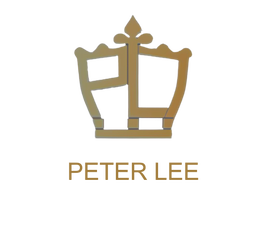
At this year's Watches and Wonders 2023, Rolex once again made waves in the watch industry with the release of a new Daytona model, commemorating the 60th anniversary of the watch's original launch. Given Rolex's incremental approach to design changes, the relatively subtle updates were not surprising. The brand is known for gradually refining its models over time, rather than implementing drastic transformations. In fact, Rolex even discontinued the Milgauss and Cellini models this year. While the changes made to the Daytona this year are incremental, they are more significant than the 2016 update. We had the opportunity to examine two of the new Rolex Cosmograph Daytonas at the show: the platinum reference 126506 and the steel and yellow gold reference 126503.
While the immediate visual appearance of the Daytona remains unchanged, the devil lies in the details. The 40mm case diameter remains the same, but the lugs have been slightly enlarged to give the watch a touch of modernity. It's ironic considering that watches are generally trending towards smaller sizes. However, rest assured that the Daytona continues to provide an exceptional wearing experience. It has always been, and will likely continue to be, one of the most comfortable chronographs on the market.
There's another change that contributes to the watch appearing slightly larger. In the 2016 revision, the Daytona received a Cerachrom bezel that extended to the edge, resulting in a wide appearance and making the dial seem smaller. Now, on models with a Cerachrom bezel, a small polished ring has been added around the insert. This visually reduces the bezel's width and enhances the prominence of the dial. The recessed appearance of the ring creates a sense of depth while maintaining a flush profile, making the entire case more noticeable. The models with precious metal bezels feature a polished edge without a contrasting ring. Aside from these case changes, the models remain similar to the previous iterations. The screw-down Triplock crown and pushers ensure water resistance up to 100m. Personally, I've always enjoyed the look of the Daytona with the unscrewed pushers, but that might be a matter of personal preference.
Another change that adds cohesiveness to the watch is the etched scale on the platinum and black-and-gold models' bezels, which now feature PVD platinum or gold fill to match the cases. It's a subtle change that might go unnoticed at first, but when you do notice it, it enhances the overall harmony of the watch. The sapphire crystal and bracelets remain unchanged, with the former featuring anti-reflective coating and the latter incorporating the convenient Easylink extension mechanism.
It's worth noting that the platinum version of the Daytona is quite heavy. The weight is immediately noticeable, but you quickly get accustomed to it. However, once you switch back to a lighter watch, the contrast can be striking. Transitioning from the platinum Daytona to the new titanium Yacht-Master, for example, might feel quite different.
The unexpected combination of brown and ice blue on the platinum 126506, first introduced for the model's 50th anniversary a decade ago, is truly captivating in person. It might seem like an unlikely pairing, and perhaps it shouldn't work, but it does. The contrast between warm and cool tones achieves a chromatic balance that surprises and delights. As for the two-tone 126503, it simply doesn't resonate with me. While it's a beautiful watch, the white, steel, and yellow gold combination feels a bit bright and reminiscent of the 90s. If I were to opt for a gold watch, I would prefer an all-yellow gold variant.
Now let's talk about the dials. At first glance, they might seem similar to the previous generation, but there's an immediate sense of spaciousness and lightness. Rolex has made small adjustments to the markers, making them longer and thinner, eliminating the stubby indices from the previous iteration. The new markers still feature Rolex's bright Chromalight luminescence. Additionally, the rings around the chronograph registers have been slimmed down. Some might find the open dial a departure from the cozy feeling of the old Daytonas, but personally, I appreciate the new dials, primarily due to my preference for slimmer markers.
The platinum 126506 Daytona now features a display caseback, marking the first time Rolex has incorporated one in a sports watch. Opting for an exhibition caseback likely presented cost savings for the brand, considering a solid platinum caseback would be expensive. Additionally, it created a buzz among watch enthusiasts. People are going to be irrationally excited about this development. The other models, however, retain the solid casebacks seen in previous iterations.The current generation is equipped with the updated Caliber 4131 automatic chronograph movement. Like the watches it powers, this new caliber represents an evolution rather than a revolution. The specifications remain the same, with a frequency of 28,800 vph and a power reserve of 72 hours. It retains all the features Rolex is known for, including the Chronergy escapement, Paraflex antishock system, and blue Parachrom hairspring. The movement is still a Superlative Chronometer, certified not only by COSC but also by Rolex's rigorous in-house testing, ensuring accuracy within -2/+2 seconds per day. However, incremental updates have resulted in fewer components compared to the 4130, enhancing reliability by reducing potential points of failure.
The main cosmetic updates to the 4130 are the cutout 18k gold oscillating weight (replacing the solid steel weight of the 4130) and a new style of striping called "Rolex Côtes de Genève." The latter features narrow, polished bands between the traditional stripes, although they can be difficult to discern in pictures and even in person, relying on lighting conditions for visibility. The Rolex Cosmograph Daytona reference 126503 in two-tone is priced at $19,500 USD, while the pricing for the platinum reference 126506 is available upon request (the 50th-anniversary edition retailed for $75,000 ten years ago, so expect it to be higher). The starting price for the steel variant is $15,100 USD. For more details, please visit Rolex's official website.




